Coyote and Dancing Cranes!
Three cheers for the power of positive thinking! We hit the field hoping to see coyotes this morning. And we saw coyotes! Every camera check day begins with a paws crossed ‘power thought’ that ‘today will be the day we see a lion on camera!’ We tried some coyote power today and it worked, so maybe we’re just working our way up to the bigger stuff!
We didn’t have to wait long before we saw our first coyote. Just before the second camera stop we drove up on a levee that borders a large agricultural field. The day was hazy and the air had a gauzy, golden quality that lasted long after the sun broke through. A group of cranes was foraging in the middle of the field and as we watched, a coyote caught our eye. We’d caught his eye, too and he began to amble with that rolling, easy coyote gait, stopping every so often to gaze in our direction. He passed the cranes, who were dancing and cavorting, seemingly unfazed by the coyote’s business or our presence on the levee although you can be sure they were aware of our presence. The coyote watched all the activity with interest for several minutes before passing out of sight.

At the next camera stop we spied a large bone, likely the leg bone of a deer, white and obvious as it lay on the ground on top of the darker ground cover. There was still some membranous material along the length of the bone, indicating the animal could have been killed earlier this year. We looked closely for teeth and chew marks that could be indicative of a lion kill to see if we could tell who the predator might have been. But the bone looked pretty smooth and we weren’t able to see helpful clues. It could be that a resident coyote pack family is cooperatively hunting and so able to bring down adult deer. But we don’t know.

We searched the area and didn’t find any more bones but found a fair amount of deer scat and quite a few deer trails through the tall grass leading to the levee above the Cosumnes River. We climbed down into the riverbed and found some great tracks, including – coyote! It looks like there’s a lot of coyote movement up and down the riverbed right now at this location. We also heard coyotes to the north as we stood there quietly in the riverbed. It was probably about 9:00am in the morning and they had something to say!
We came upon some beautiful, clear tracks in the damp sand of the riverbed and picked up what looked like a side trot gait of a coyote. The smaller hind paw registers in front of the front paw. This is a very common gait used by coyotes for lots of reasons, including efficient travel, when away from cover, and exploring.
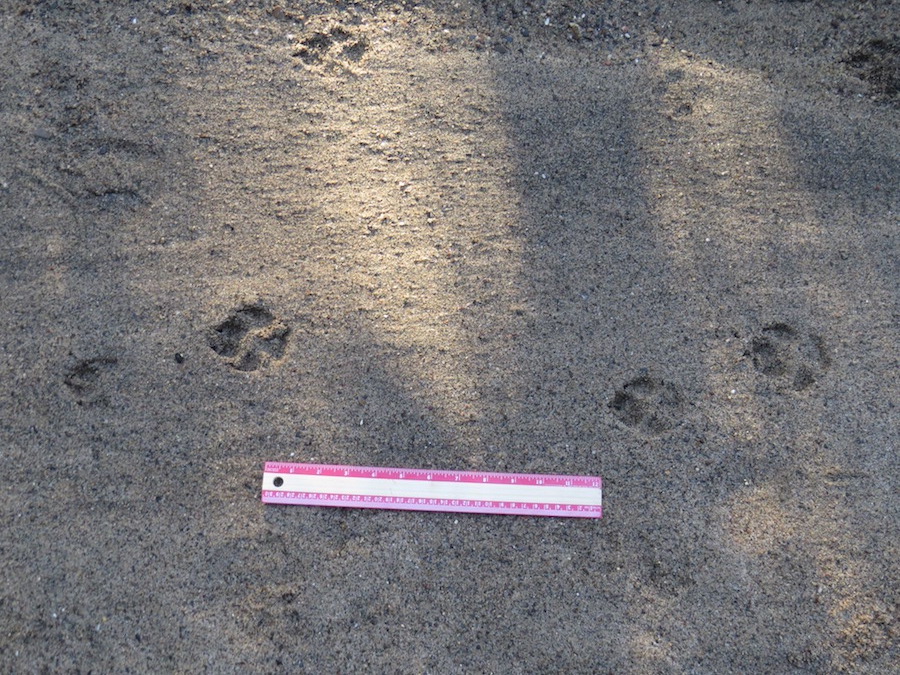
Coyote tracks and dog tracks can be difficult to tell apart but some of the main characteristics are that coyote tracks tend to be compact, more oval and often only the two middle toenails can be clearly seen in the tracks. Dog tracks tend to be rounder with distinct, blunt toenail marks and toes that point outward in different directions. That said, dog tracks can be mistaken for coyote so experience and ‘dirt time’ looking at both track patterns can help develop subtle identification skills.
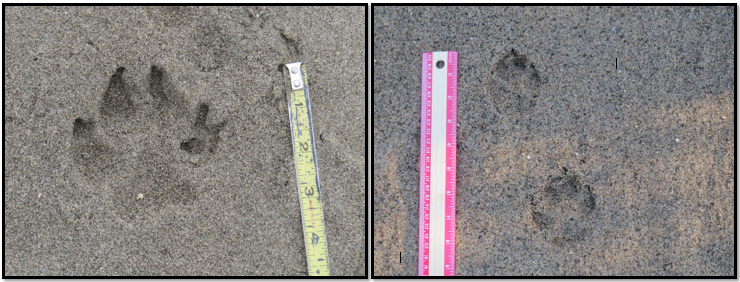
The next set of cameras brought – you guessed it – more coyotes!
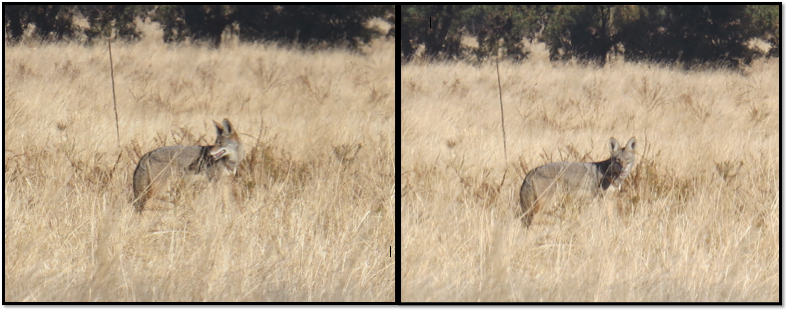
Back at the office we spent the rest of the day carefully reading the SD cards we’d collected from the day’s camera checks. It’s an intense process and we spread out in the conference room with computers, data record sheets and snacks!

There were no mountain lions on camera but we saw coyotes and bobcats, along with healthy looking deer, a raccoon family, lots of wild turkey action and even a Black phoebe who regularly uses one of the cameras for a hunting perch.
Phoebes are insectivores and will perch, waiting until they see an insect flying, then the bird will swoop from it’s perch, try to grab the insect mid-flight, and if successful, return to their perch to eat what they’ve just caught. Phoebes are beautiful, acrobatic fliers and like all wildlife, they work hard to eat.

At another camera we came across a very unusual sight. Take a look and see what you think! We’ll post the answer just below.
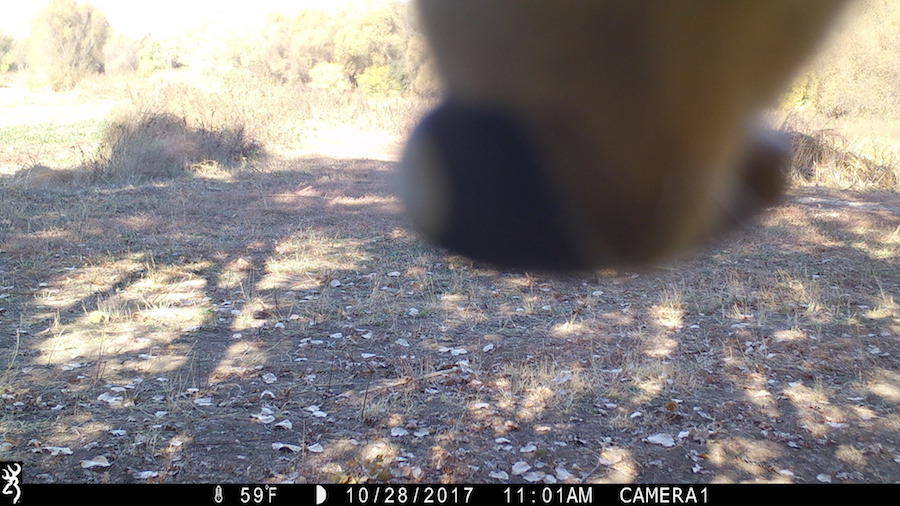
We also had a lion camera team meeting this week and our steadfast crew members showed up along with some new volunteer energy! It was decided unanimously that we’re all ‘all in’ and will continue our efforts to capture a lion on camera throughout the winter season as weather and rain permit.


With the cooler weather coming, it’s hard to say what each mountain lion looking to disperse in the Sierra is thinking and what decisions they’ll make about movement into the Valley. Our most recent lion sightings were this last summer and that by no means is an indication of when the next lion will stroll through. With talk of it being a dry year as well as talk that it’ll be a wet year, we’ll keep tending the cameras and keep our eyes peeled for a lion, whenever he or she decides to stroll through!
And we had such good luck with our coyote power this week that you can be sure next week we’ll start the day with positive thoughts for mountain lion power!
Aerial Photo Feature! One of our crew members, Tom Palmer, also regularly flies over the Preserve and photographs stunning aerial views of the landscape throughout the seasons. He’s kindly shared some images and featured here are a few of our camera sites seen, not as a lion would see them, but as an eagle might!
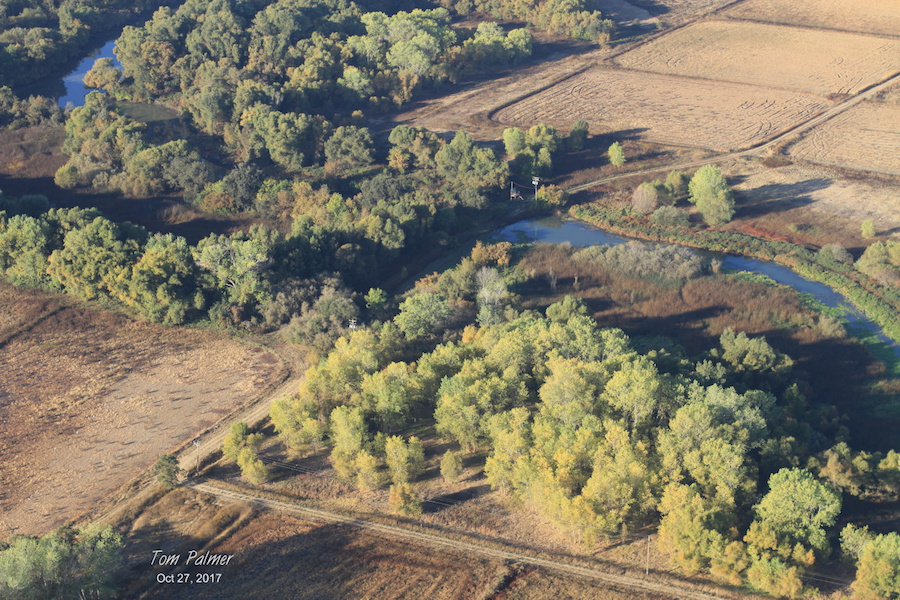

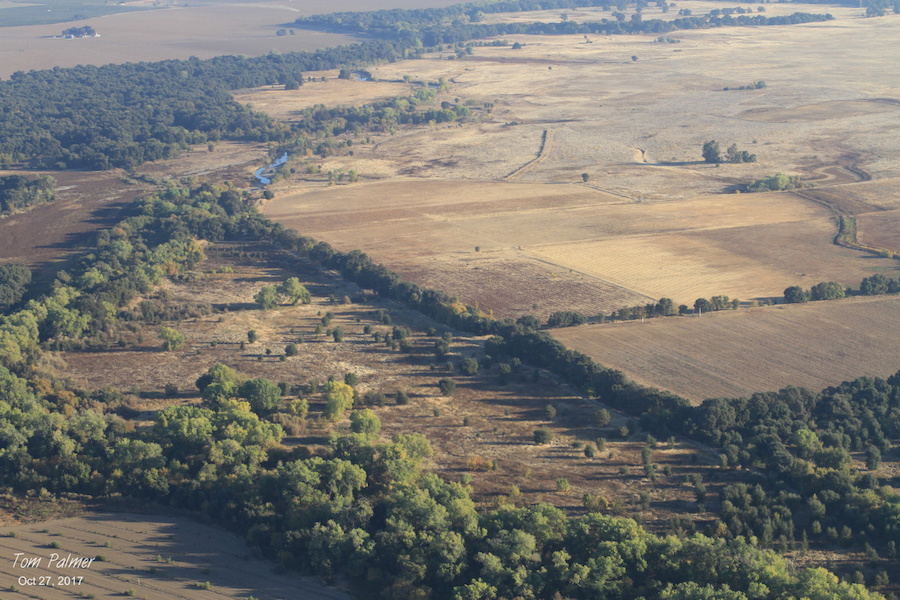
Stay tuned for more of Tom’s aerial photos featuring our camera locations next week!
The mystery photo answer is sitting right in the middle of this photo!

